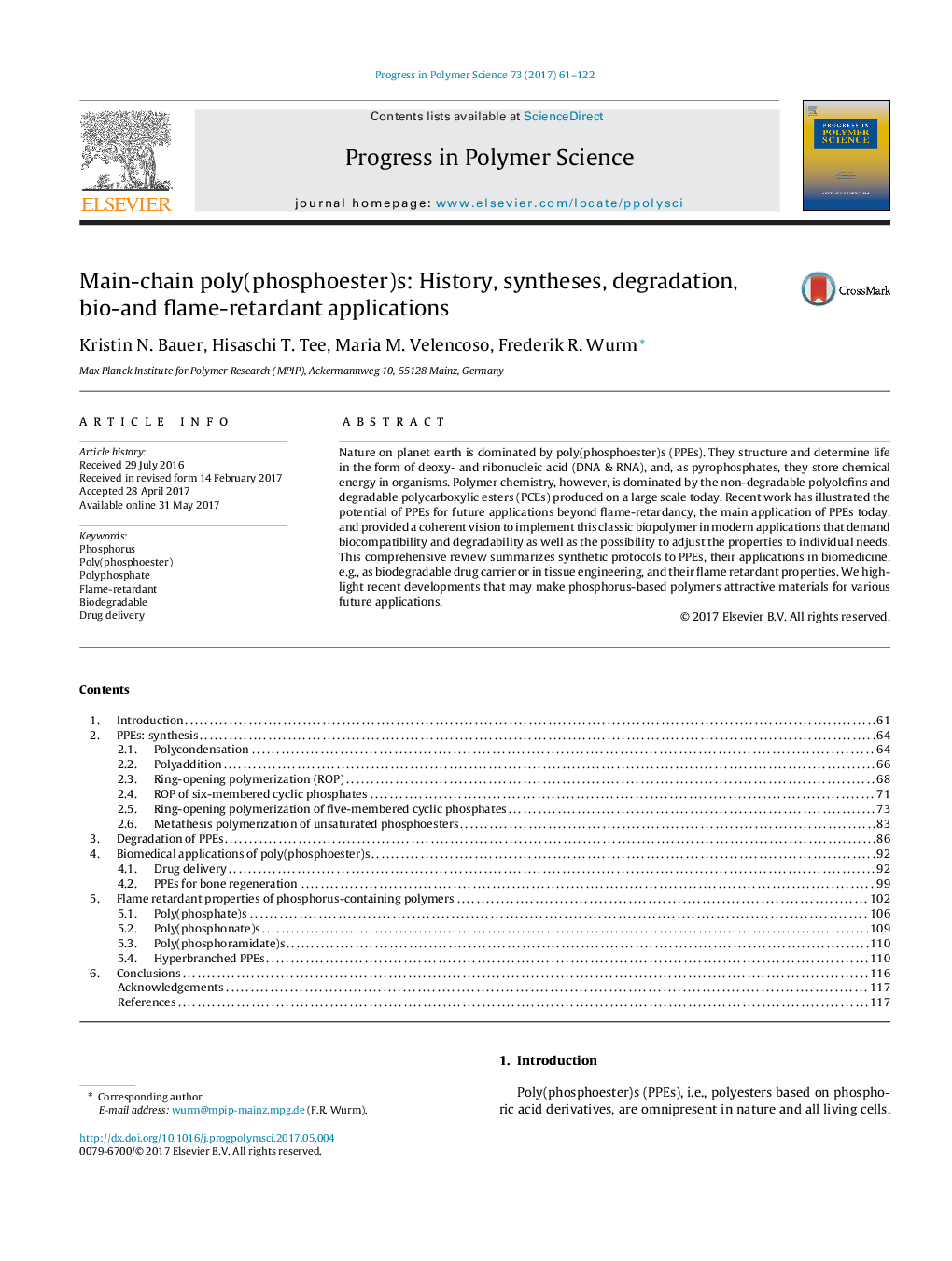| Article ID | Journal | Published Year | Pages | File Type |
|---|---|---|---|---|
| 5207872 | Progress in Polymer Science | 2017 | 62 Pages |
Abstract
Nature on planet earth is dominated by poly(phosphoester)s (PPEs). They structure and determine life in the form of deoxy- and ribonucleic acid (DNA & RNA), and, as pyrophosphates, they store chemical energy in organisms. Polymer chemistry, however, is dominated by the non-degradable polyolefins and degradable polycarboxylic esters (PCEs) produced on a large scale today. Recent work has illustrated the potential of PPEs for future applications beyond flame-retardancy, the main application of PPEs today, and provided a coherent vision to implement this classic biopolymer in modern applications that demand biocompatibility and degradability as well as the possibility to adjust the properties to individual needs. This comprehensive review summarizes synthetic protocols to PPEs, their applications in biomedicine, e.g., as biodegradable drug carrier or in tissue engineering, and their flame retardant properties. We highlight recent developments that may make phosphorus-based polymers attractive materials for various future applications.
Related Topics
Physical Sciences and Engineering
Chemistry
Organic Chemistry
Authors
Kristin N. Bauer, Hisaschi T. Tee, Maria M. Velencoso, Frederik R. Wurm,
